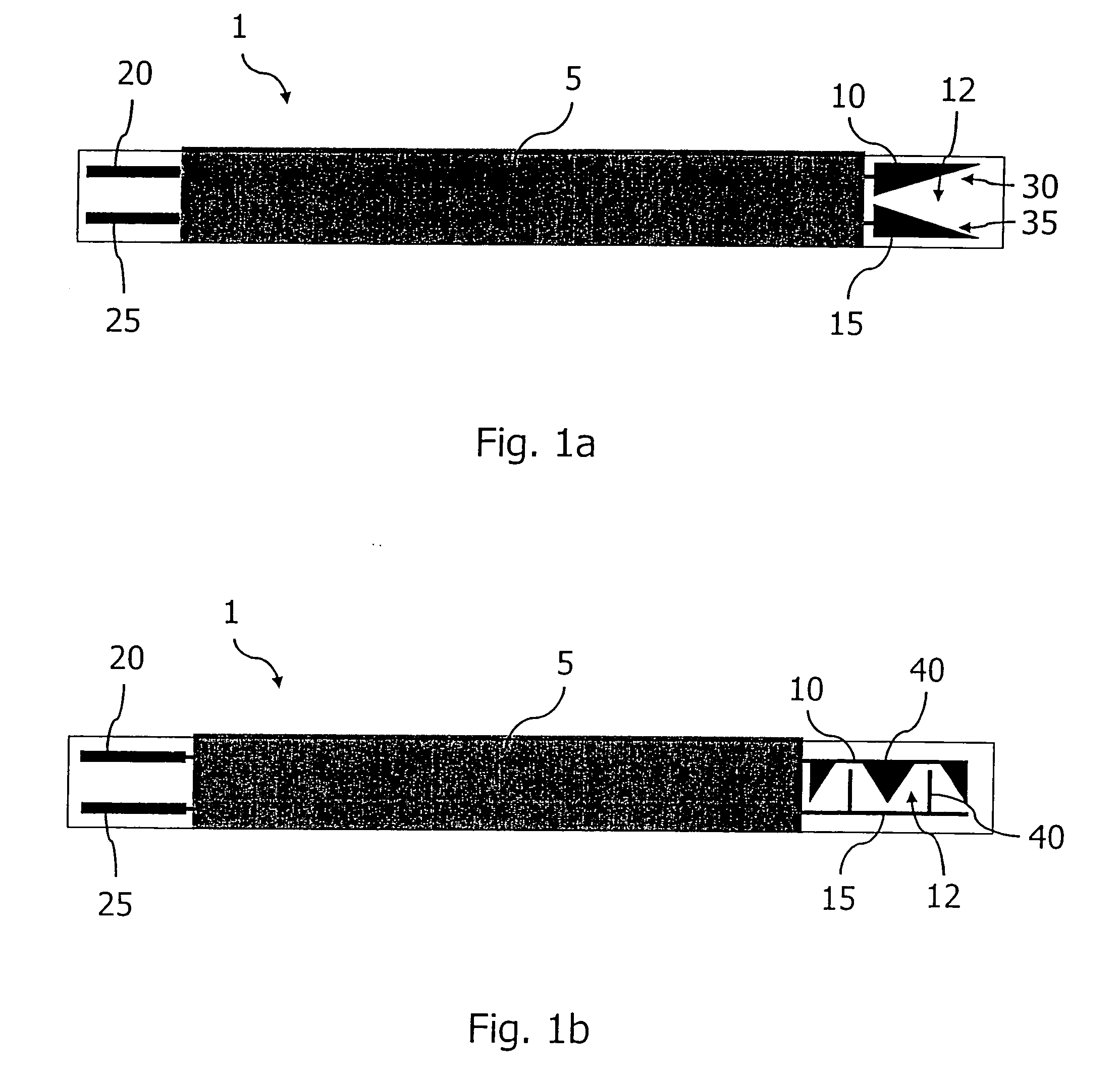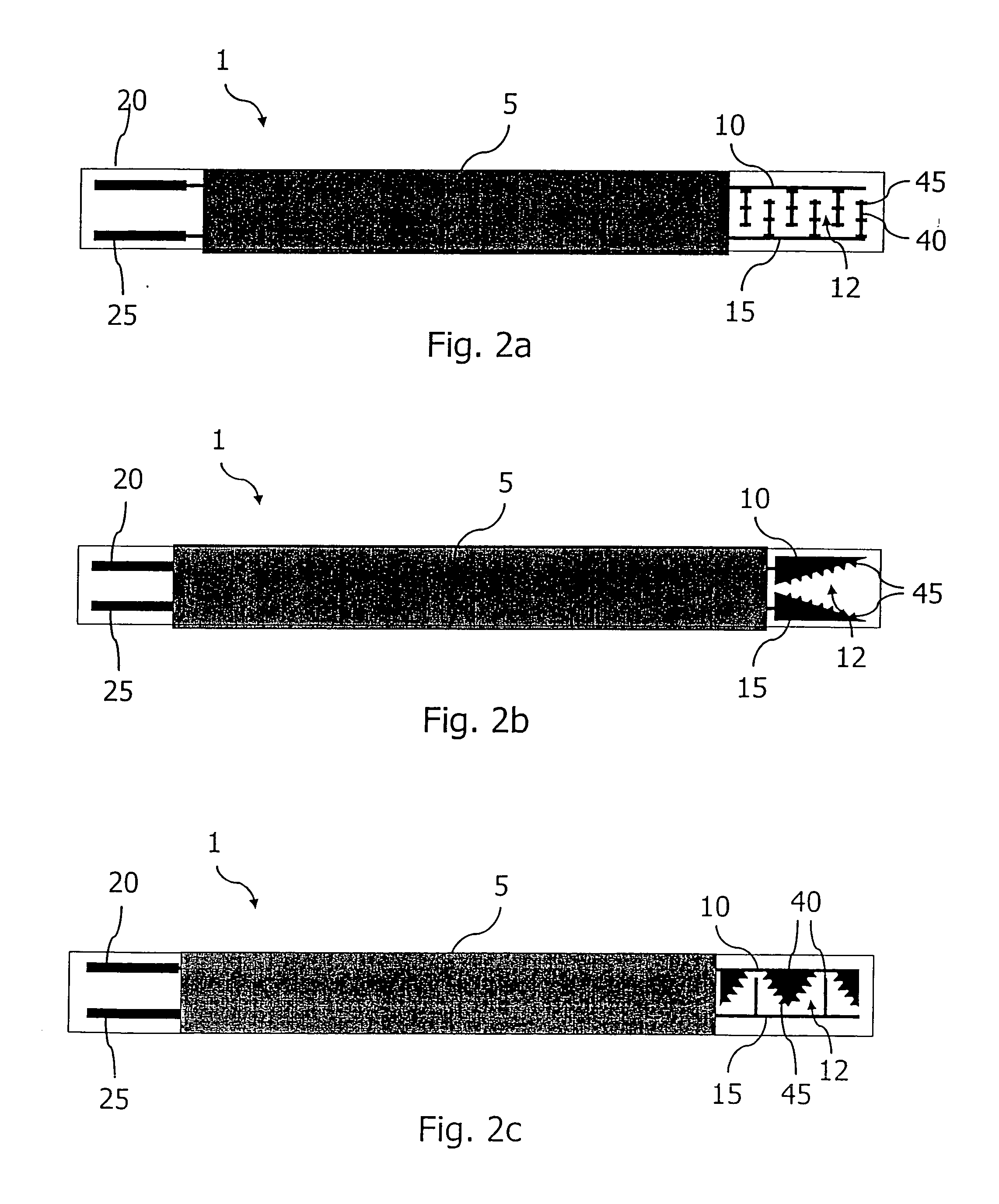Resistive Particle Sensors Having Measuring Electrodes
a technology of resistive particle and electrode, which is applied in the field of sensors, can solve the problems of inability to accumulate soot immediately, and no new particle deposition is possible, and achieve the effect of improving the sensitivity of measuremen
- Summary
- Abstract
- Description
- Claims
- Application Information
AI Technical Summary
Benefits of technology
Problems solved by technology
Method used
Image
Examples
Embodiment Construction
[0014]In a first exemplary embodiment according to FIG. 1a, sensor 1 for determining the concentration of particles in gases, in particular of soot particles, has a substrate element 5, on which a first 10 and a second 15 measuring electrode are situated as a measuring device. The space between measuring electrodes 10, 15 is used as measuring area 12, on which the particles to be detected are deposited. The two measuring electrodes 10, 15 are connectable to a measuring and control unit (not shown in the figures) via contacts 20, 25 and a voltage may be applied to them. The measured value changes as a function of the state of particle deposition on measuring area 20. The measured value of resistance (impedance) or current intensity value measured via measuring electrodes 10, 15 is a function of the measuring mode.
[0015]As explained previously, the soot concentration in a gas may ultimately be determined from the measured values. The two measuring electrodes 10, 15 are configured acco...
PUM
 Login to View More
Login to View More Abstract
Description
Claims
Application Information
 Login to View More
Login to View More - R&D
- Intellectual Property
- Life Sciences
- Materials
- Tech Scout
- Unparalleled Data Quality
- Higher Quality Content
- 60% Fewer Hallucinations
Browse by: Latest US Patents, China's latest patents, Technical Efficacy Thesaurus, Application Domain, Technology Topic, Popular Technical Reports.
© 2025 PatSnap. All rights reserved.Legal|Privacy policy|Modern Slavery Act Transparency Statement|Sitemap|About US| Contact US: help@patsnap.com



